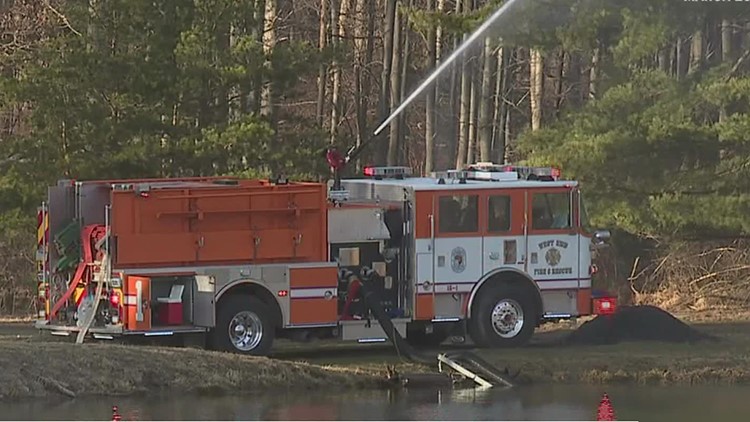HARRISBURG, Pa. — The Pennsylvania Department of Conservation and Natural Resources on Thursday urged residents to be aware of the elevated risk of forest and wildfires as the spring season continues.
“Dry conditions across the Commonwealth have led to elevated risks for fires to spread this year,” said DCNR Secretary Cindy Adams Dunn. “We know that a simple act of carelessness when lighting a camp or bonfire could prove disastrous among tinder-dry conditions in some of our forests. Wildfire dangers climb with each day of sun and wind and we encourage Pennsylvanians to be cautious when lighting fires during these conditions.”
The greatest danger of wildfires in Pennsylvania occurs during the spring months of March, April, and May, and the autumn months of October and November, Dunn said.
In Pennsylvania, 99% of all wildfires are caused by people. Certain conditions are necessary for a wildfire to occur:
- An available fuel source, such as dried grass or leaves
- Dry conditions, including low relative humidity
- An ignition source -- some way for the fire to start
Thousands of acres of state and private woodlands are burned by wildfires each year, Dunn said. Debris burning, equipment use, power lines, and campfires are some of the most common causes of wildfires in Pennsylvania. Light rainfall in many areas, lack of green foliage in the spring, low humidity and sunny and windy days all combine to increase the chances of forest and brush fires spreading.
Such fires are almost always traced to human carelessness, according to Dunn.
Volunteer and Bureau of Forestry firefighters are frequently dispatched to wildfires outside of Pennsylvania during the summer months and they also respond to wildfires during this busy season. That responsibility extends to Pennsylvania’s 17 million acres of private and state-owned woodlands.
“Most brush fires and wildfires are preventable if people take the proper steps to practice safe behaviors,” State Forester Ellen Shultzabarger said. “We want to remind people to be careful with campfires and backyard burning so that they can take the proper precautions at all times. It can help save lives, protect wildlife habitats, and reduce the strain on our hardworking firefighters.”
Shultzabarger noted an increase in Unmanned Aircraft Systems, or drones, near the scenes of wildfires. These aircraft have specific guidelines that must be adhered to when flying over public lands, including that they must fly below 400 feet, remain clear of surrounding obstacles, and not fly in areas that have Temporary Flight Restrictions, such as wildfires.
DCNR encourages those starting a fire at home or at a campsite to make sure there are no combustible items within 10 feet of the fire. Additionally, it is recommended to have a rake or shovel along with water to properly suppress the embers of a fire.
Finally, officials recommend checking DCNR’s website to see if there is an elevated fire risk.
Other advice for preventing wildfires from DCNR’s Bureau of Forestry includes:
- Clear the area around the fire prior to starting it;
- Keep the fire small and never leave it unattended;
- Before you strike a campfire match, first consider if it is too warm, dry or windy for a fire and if the surrounding area is free of leaves and other combustibles;
- Make sure there is a ready source of water (bucket or hose) nearby and a rake to extinguish any embers that might escape; and
- When you are done with the fire put it out with water until all ashes are cold to the touch.
Residents are also advised to create “safe zones” around homes and cabins by removing leaves and other debris from the ground and rain gutters, stacking firewood away from structures and trimming overhanging branches.



